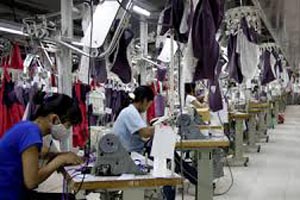
Vietnamese enterprises want to take up China plus one policy to ease reliance on China
YarnsandFibers News Bureau 2014-07-11 22:30:00 – VietnamChina plus One or China +1 is an international business strategy that consists of the expansion of one company's current operations in China, to another country having low wage rate, strong infrastructure and a suitable atmosphere for business. China plus one, strategy is followed by Japanese investors over the last many years as well. Vietnamese textile and garment companies want to take up the “China plus one” policy in an effort to escape reliance on China as its biggest material supplier.
At least five major players in the textile and garment sector, Thanh Cong, Garmex Saigon, Gia Dinh, Saigon Garment 2 and Saigon Garment 3, determined to “take actions” to escape the reliance on China.
Thanh Cong Textile & Garment Company is one of a few companies that will be able to enjoy preferential export tariffs of zero percent when Vietnam becomes a member of the Trans Pacific Partnership Agreement (TPP).
The agreement, with the “yarn forward” principle, will only grant preferential tariffs to those companies which make products with materials from TPP-member countries.
Thanh Cong in Vietnam is known as one of two companies that have closed-end production lines. The only material it has to import is cotton to make fibre.
Fifty percent of the cotton needed for Thanh Cong is imported from the US, while the remaining comes from other TPP-member countries.
Phan Thi Hue, chair of Thanh Cong said that they can surely take the initiative in the material supply.
The other four, Gia Dinh, Saigon 2, Saigon 3 and Garmex Saigon, still have been importing materials in large quantities from China. However, they have been trying to cut down the percentage of China-made content in their products.
Garmex Saigon, which only outsources for foreign partners, is now focusing on making products for export under the FOB (free on board) model. Earlier Garmex had to import 70 percent of material needed, this proportion has reduced to 50 percent and it will go down further in the future.
As two years ago, Garmex Saigon successfully convinced an US partner to accept products with Vietnamese-made fabric. Since then, they have bought one million square meters of fabric from domestic sources,, said Le Quang Hung, Chair of Garmex Saigon.
Gia Dinh Textile & Garment has also succeeded with the FOB-model. It has poured VND400 billion into a textile factory, which is expected to provide cotton fiber to domestic enterprises that, make shirts and sport T-shirts.
Meanwhile, Saigon 2 and Saigon 3 have been the pioneers in seeking domestic fabric supply sources. The former now buys fabric from several Japanese invested enterprises in Vung Tau City, while the latter has managed to successfully reduce Chinese-made material content to 20 percent.
Vietnamese enterprises wanting to take the initiative in the textile and garment material supply to escape reliance on China, need to be done step by step. In the absence of corrective measures, the situation may further worsen.
Market Intelligence
Ask for free sample Report

experience
Customer Base
dedicated team
Countries Served Worldwide









